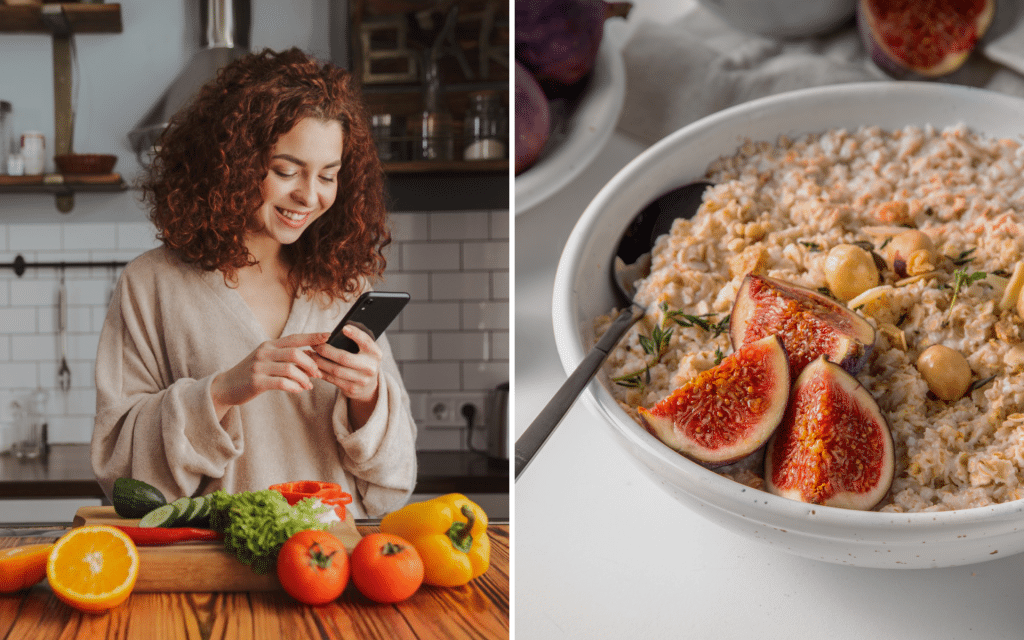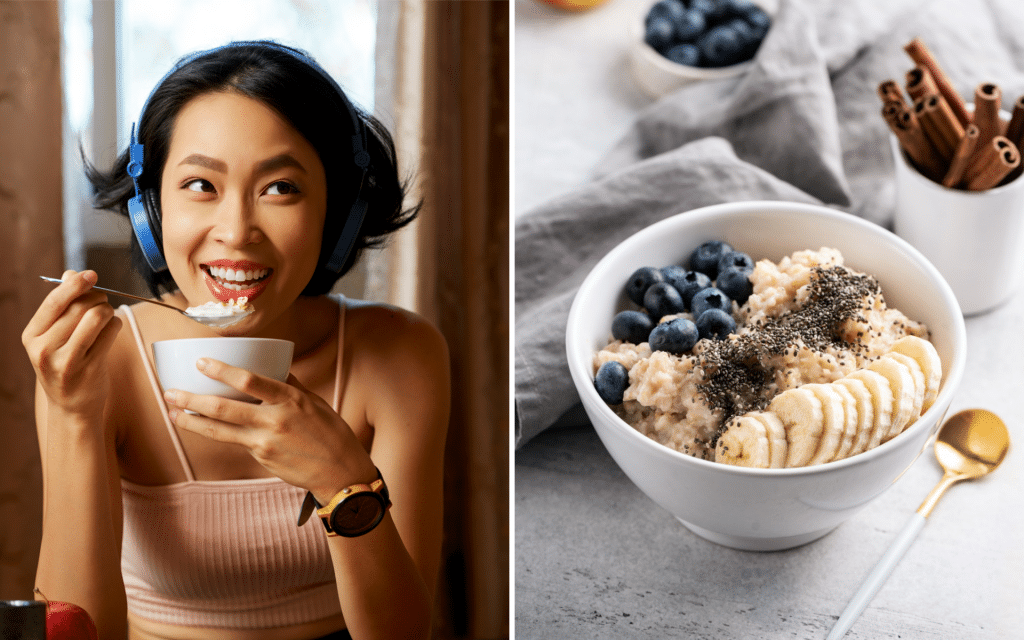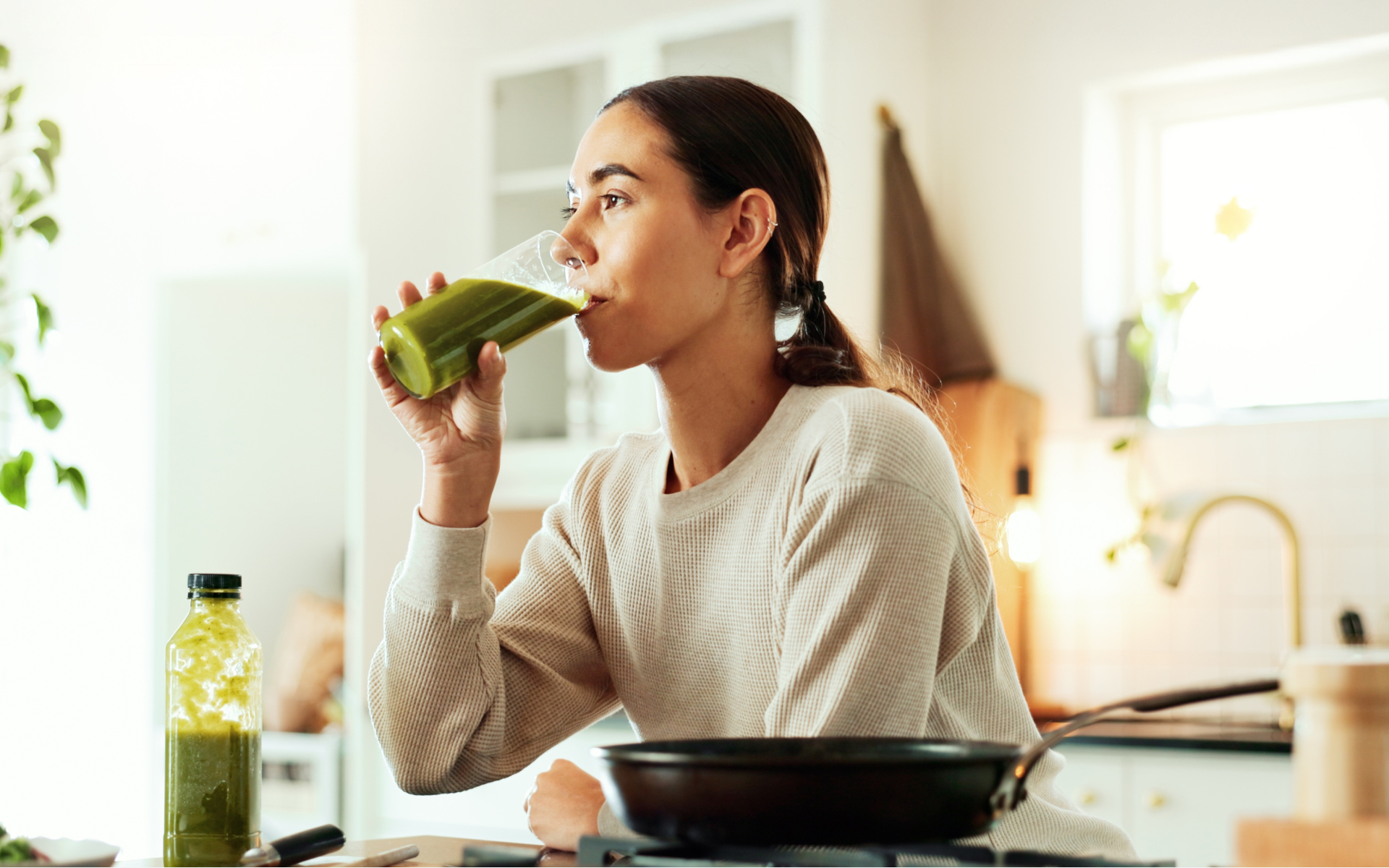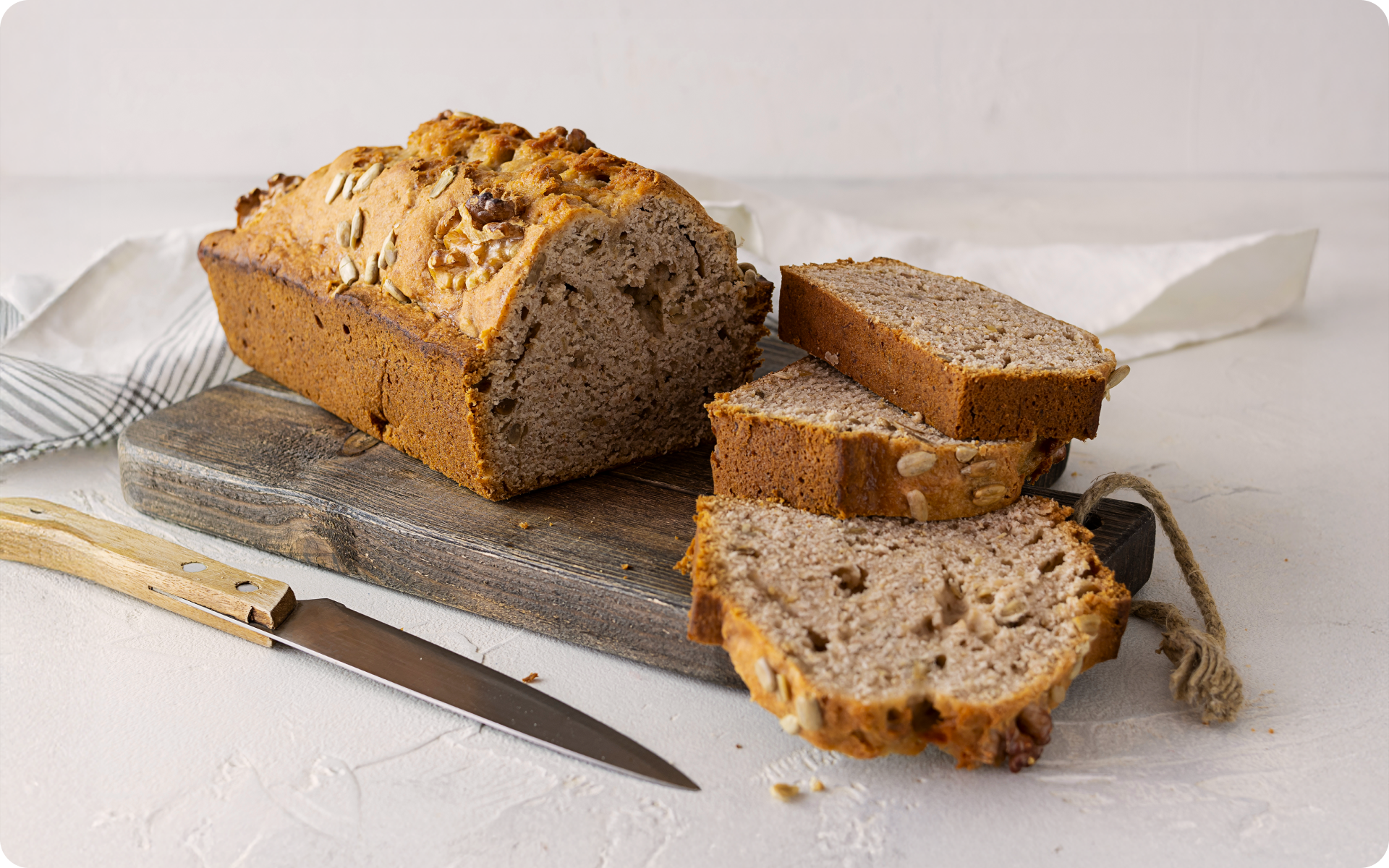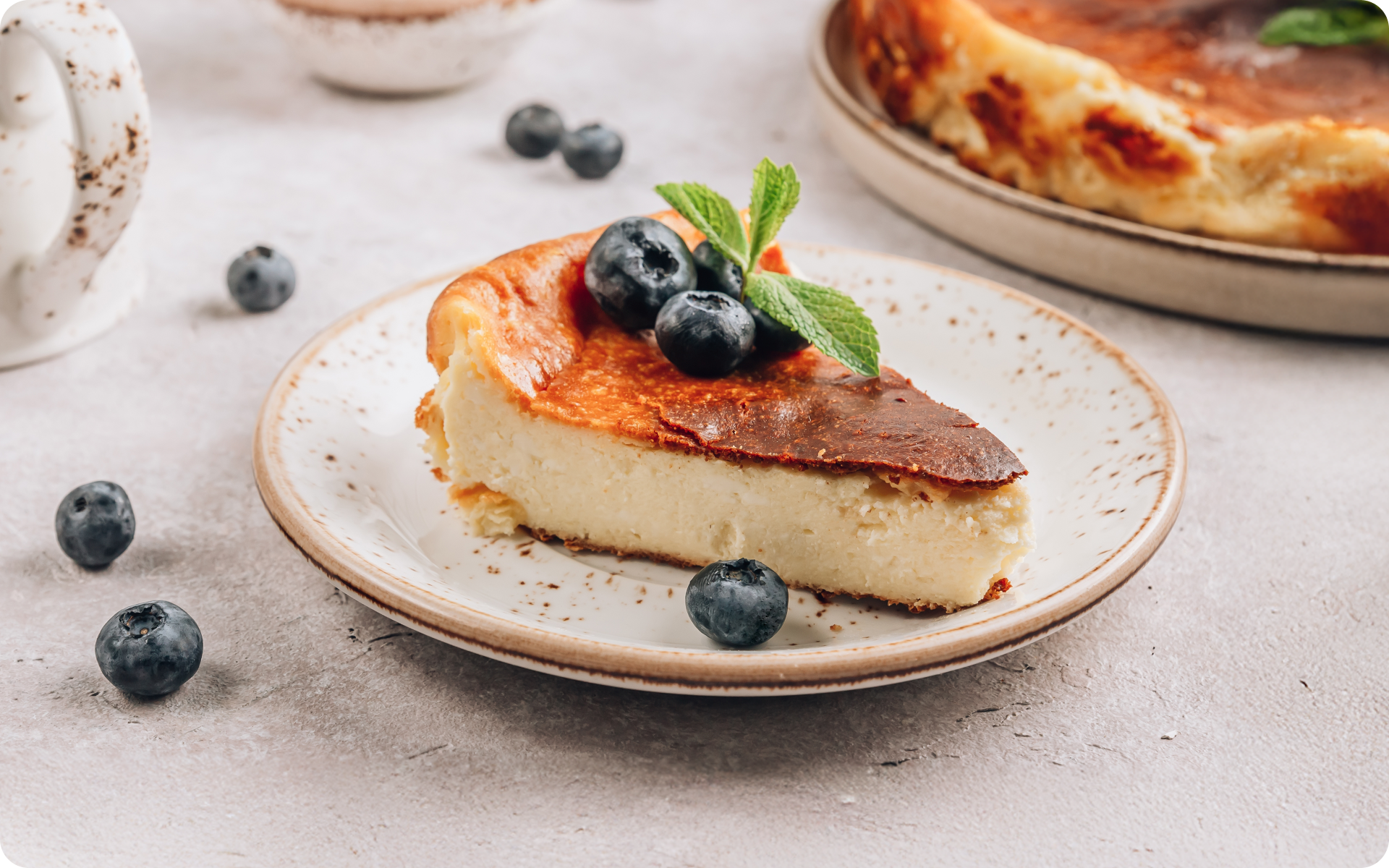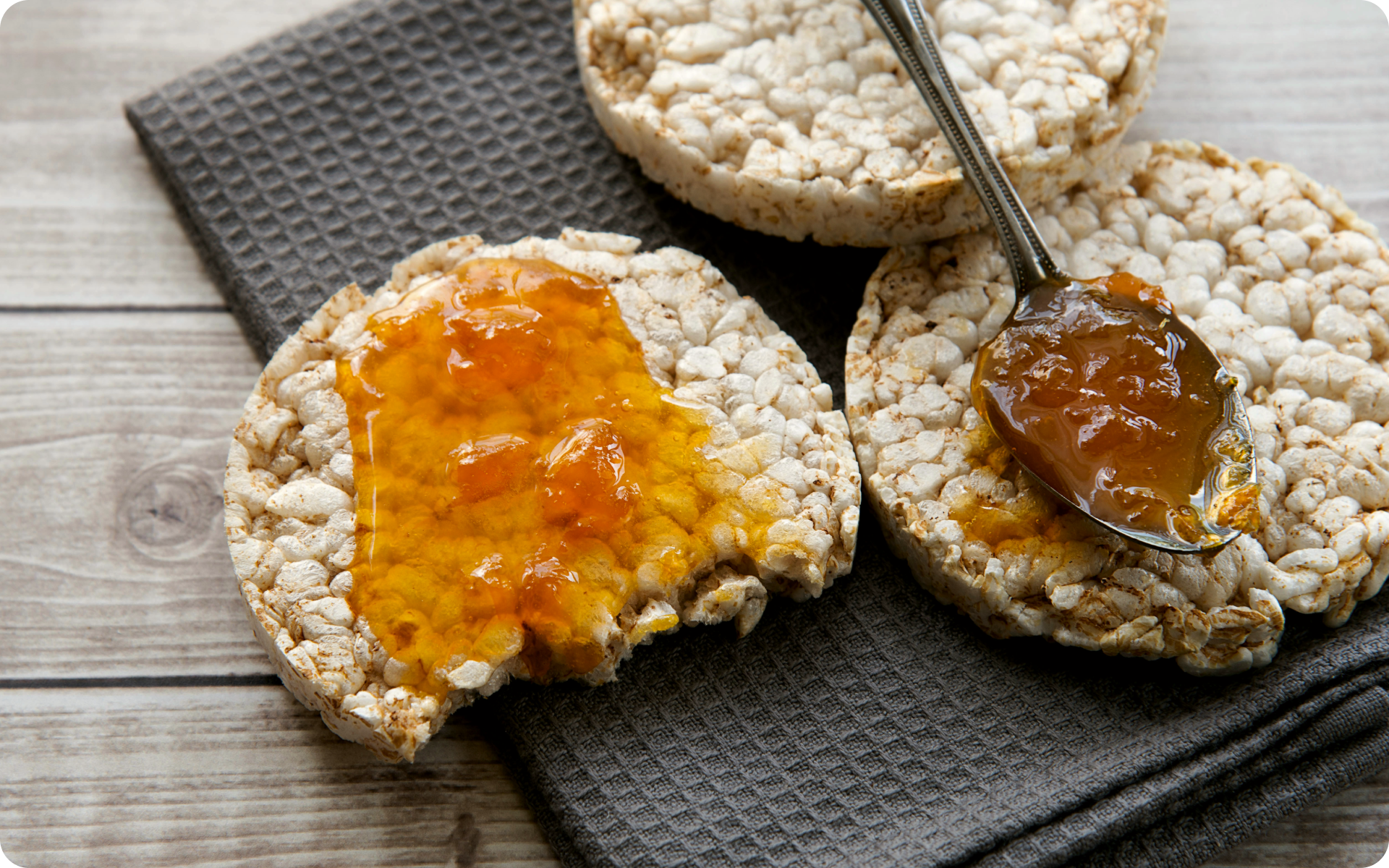According to multiple studies on the benefits of whole grains, specifically oats, these grains are rich in dietary fiber and have bioactive compounds that are beneficial for human health.
These compounds have been shown to help reduce the risk of cardiovascular diseases, type 2 diabetes, atherosclerosis, dermatitis, (LDL) cholesterol, gastrointestinal disorders, cancer, and obesity (1, 2, 3, 4).
Eating a high-protein breakfast is good for you and can help you start your day off right. While oats are seen as a low-cost protein source – protein content of 11–15 % (5) – you may want to increase the amount of protein in this meal. But how do you do it without using protein powder?
Here’s all you need to know about making high-protein oatmeal without protein powder.
What Is a High-Protein Oatmeal Without Protein Powder Recipe?
As the name suggests, this is a recipe that uses other ingredients to increase the protein content of oatmeal.
While protein powder is seen as an easy way to quickly increase your protein intake, some people prefer not to use these powders due to factors such as not liking the taste or because some brands use added flavorings and sweeteners, which may not be desired.
Research has also shown that these powders, specifically whey protein powders, may have adverse effects on kidney and liver function when consumed in excess (6, 7).
Due to these factors, many people prefer to have/make high-protein oats without whey and with natural foods.
How Much Protein Should You Eat for Breakfast?
You should try to consume at least 30 g of protein at breakfast.
In a study published in the Clinical Nutrition journal, researchers found that spreading protein intake out throughout the day into meals containing between 30 and 45 g protein/meal leads to greater leg lean mass and strength. They suggested that people should aim to consume 1 to 2 daily meals with protein content from 30 to 45 g (8).
In a more recent study published in the Journal of Human Nutrition and Dietetics, researchers stated that a protein intake of 30 to 40 g per meal, particularly at breakfast and lunch helped to increase the total daily protein intake of older adults. This is important for older adults as a higher protein intake can help them maintain muscle mass, which is commonly lost as we age (9).
From these studies, we can see that having around 30 g of protein at breakfast is a good place to start.
When it comes to weight loss, progress is made by inches, not miles, so it’s much harder to track and a lot easier to give up. The BetterMe: Health Coaching app is your personal trainer, nutritionist, and support system all in one. Start using our app to stay on track and hold yourself accountable!
How Are Oats High-Protein?
These cereals are high in this macronutrient as they naturally contain all four types of cereal proteins, namely albumins, globulins, prolamins, and glutelins, which are water soluble, salt water soluble, soluble in dilute alcohol solution, and soluble in acids or bases, respectively (5). One cup of cooked oats contains approximately 6 grams of protein (10).
Read more: Protein and Fiber Foods to Transform Your Diet and Health
How to Get More Protein in Your Oats Without Protein Powder
If protein powders aren’t for you but you still want to have a high-protein oatmeal recipe, here are some ingredients that can help you increase the amount of this macronutrient in your meal.
- Milk
Unless you’re vegan or have a lactose intolerance, adding milk to your morning oatmeal or cooking it in milk instead of water is a great way to increase the protein macros. One cup of milk adds an extra 8 grams of protein (11).
If you don’t consume dairy, plant milk is a good alternative. Soy products are naturally high in protein and you can use soy milk for your oats. As with dairy, a cup of unsweetened soy milk also adds approximately 8 g of protein (12).
- Nut or Seed Butters
These kinds of butter are made by roasting and grinding nuts or seeds into a paste. Most nut butters are made from peanuts, almonds, cashew, macadamia, hazelnut, pecan, pistachio, or walnut.
Sunflower seed butter is the most common type of seed butter, but you can also find other types of butter made from sesame seeds, pumpkin seeds, hemp, chia seeds, and much more (13, 14).
Nut and seed butters add protein, healthy fats, and fiber and can make a good addition to your high-protein breakfast without protein powder
- Whole Seeds and Nuts
If you don’t have access to nut or seed butters, whole nuts and seeds work just fine. In fact, high-protein seeds such as chia seeds are often used to make protein overnight oats without protein powder. Other seeds that are high in this macronutrient that you can add to your overnight oats include hemp, flax, sunflower, and pumpkin seeds.
Whole nuts can be added to your overnight oats as a topping to add an extra crunch to your breakfast. According to research, peanuts, almonds, cashews, and pistachios have the most protein (15), so make sure to stock up on them. In addition to oatmeal toppings, they can also be eaten by themselves as high-protein snacks.
Learn more about low-calorie high-protein snacks
- Greek Yogurt or Cottage Cheese
As with milk, Greek yogurt and cottage cheese are excellent high-protein options you can add to your breakfast oats. 100 g of cottage cheese will add 11 g of protein to your meal, while the same amount of Greek yogurt adds 10.2 g of this macronutrient (16, 17).
- Eggs
Oats don’t have to be a sweet porridge with berries, fruits, and nuts. Savory oats offer a different way to consume these grains with a variety of ingredients including eggs. There are many ways to use eggs, but most savory oat recipes use boiled or poached eggs. One boiled (50 g) egg adds 6.2 g of protein to your daily macros (18).
Pro tip: Savory oats are a great option for high-protein oatmeal without protein powder for weight loss. Make sure to add a variety of vegetables such as spinach peppers and mushrooms to increase your vegetable intake, and avocado can contribute healthy fats.
What Are Other High-Protein Breakfast Meals Without Protein Powder?
Oats aren’t the only thing you can have for breakfast. If you’re bored with them, here are two high-protein breakfast options you can try:
Quinoa and Hemp Porridge
Ingredients
- ¼ cup hemp seeds
- ¾ cup water
- 1 cup strawberries
- 1 tbsp maple syrup
- 2 cups cooked quinoa
- 4 strawberries
- ¼ cup blueberries
- 2 tbsp sliced almonds
Directions
- Add the hemp seeds, water, maple syrup, and the cup of strawberries into a blender and blend until smooth.
- Add the cooked quinoa to a bowl and pour the blended mixture over it.
- Top with the 4 extra strawberries, blueberries, and sliced almonds
This is enough for 2 servings (19)
Calories for one serving: 493. Fats: 20 g. Protein 20 g. Carbs: 60 g.
BetterMe: Health Coaching app helps you achieve your body goals with ease and efficiency by helping to choose proper meal plans and effective workouts. Start using our app and you will see good results in a short time.
Pumpkin Oat Pancakes
Ingredients
- 2 large eggs
- ¾ cup plain 2-percent-fat Greek yogurt
- ½ cup canned pumpkin maple syrup
- ½ tsp vanilla extract
- ½ cup whole wheat flour
- ¼ cup rolled oats
- 1 tsp baking powder
- 1 pinch salt
- ¼ tsp pumpkin pie spice
- 20 pecan halves, chopped
Directions
- In a medium-sized bowl, add the eggs, yogurt, pumpkin, 1 tbsp maple syrup, and vanilla and whisk until combined.
- In a larger bowl, add all the dry ingredients and combine.
- Pour the wet ingredients over the dry ingredients and stir until everything is combined.
- Place a large enough skillet over medium-low heat, spray in some cooking oil, and add some of the batter.
- Cook the pancakes as you would any other type of pancake until everything is done.
- Top the cooked pancakes with the pecan halves and the remaining maple syrup and enjoy.
Calories for one serving (3 large pancakes): 415. Fats: 16 g. Protein 22 g. Carbs: 49 g (20).
How Can I Eat 100 g of Protein for Breakfast Without Protein?
It is not advisable to try to consume 100 g in just one meal. As mentioned above, experts recommend having around 30 g of this macronutrient at breakfast. You can do this and have the other 70 g throughout the day through your snacks, lunch, and dinner.
Check out how to do high-protein breakfast meal prep so you can have all such meals ready beforehand.
Read more: Is Oatmeal Good for Weight Loss?
One large egg contains 6.24 g of protein (21). No, it doesn’t. Soaking oats doesn’t remove protein from this grain. It does help partially break down some proteins, which helps with easier digestion, but it won’t remove this macronutrient from them. These grains contain all four types of cereal proteins. Check out how to make protein shakes for muscle gain. The three extraction methods that are used to extract this macronutrient from this grain include wet extraction, chemical and enzymatic treatments, and dry fractionation (22).Frequently Asked Questions
How much protein is in one egg?
Does soaking oats remove protein?
How are oats high in protein?
How do you extract protein from oats?
The Bottom Line
Making high-protein oatmeal without protein powder isn’t as complicated as you might have imagined. If you’re not a fan of whey or plant-based protein powders, you can add any of the above-listed food options to help you increase the protein macros and reach your goals.
DISCLAIMER:
This article is intended for general informational purposes only and does not serve to address individual circumstances. It is not a substitute for professional advice or help and should not be relied on for making any kind of decision-making. Any action taken as a direct or indirect result of the information in this article is entirely at your own risk and is your sole responsibility.
BetterMe, its content staff, and its medical advisors accept no responsibility for inaccuracies, errors, misstatements, inconsistencies, or omissions and specifically disclaim any liability, loss or risk, personal, professional or otherwise, which may be incurred as a consequence, directly or indirectly, of the use and/or application of any content.
You should always seek the advice of your physician or other qualified health provider with any questions you may have regarding a medical condition or your specific situation. Never disregard professional medical advice or delay seeking it because of BetterMe content. If you suspect or think you may have a medical emergency, call your doctor.
SOURCES:
- Health benefits of oat: current evidence and molecular mechanisms (2017, sciencedirect.com)
- Whole Grains and Consumer Understanding: Investigating Consumers’ Identification, Knowledge and Attitudes to Whole Grains (2020, pmc.ncbi.nlm.nih.gov)
- A Review of Health-Beneficial Properties of Oats (2021, pmc.ncbi.nlm.nih.gov)
- To eat or not to eat oats: factors associated with oats consumption using the I-Change model (2024, bmcpublichealth.biomedcentral.com)
- Nutritional advantages of oats and opportunities for its processing as value added foods – a review (2013, pmc.ncbi.nlm.nih.gov)
- Whey protein supplementation and its potentially adverse effects on health: a systematic review (2021, pubmed.ncbi.nlm.nih.gov)
- Investigating the Health Implications of Whey Protein Consumption: A Narrative Review of Risks, Adverse Effects, and Associated Health Issues (2024, pmc.ncbi.nlm.nih.gov)
- Per meal dose and frequency of protein consumption is associated with lean mass and muscle performance (2016, sciencedirect.com)
- A higher protein intake at breakfast and lunch is associated with a higher total daily protein intake in older adults: a post‐hoc cross‐sectional analysis of four randomised controlled trials (2020, pmc.ncbi.nlm.nih.gov)
- Cereals, oats, regular and quick and instant, unenriched, cooked with water (includes boiling and microwaving), with salt (2019, fdc.nal.usda.gov)
- Milk, NFS (2024, fdc.nal.usda.gov)
- Soy milk, unsweetened (2024, fdc.nal.usda.gov)
- Plant based butters (2014, pmc.ncbi.nlm.nih.gov)
- Nut Butters (n.d., sciencedirect.com)
- Composition of Nuts and Their Potential Health Benefits—An Overview (2023, pmc.ncbi.nlm.nih.gov)
- Cheese, cottage, NFS (2024, fdc.nal.usda.gov)
- Yogurt, Greek, low fat milk, plain (2024, fdc.nal.usda.gov)
- Egg, whole, boiled or poached (2024, fdc.nal.usda.gov)
- Strawberry Quinoa Breakfast Bowl (2023, simplyquinoa.com)
- Pumpkin Protein Pancakes (2017, self.com)
- Eggs, Grade A, Large, egg whole (2019, fdc.nal.usda.gov)
- Oat proteins: Review of extraction methods and techno-functionality for liquid and semi-solid applications (2021, sciencedirect.com)

